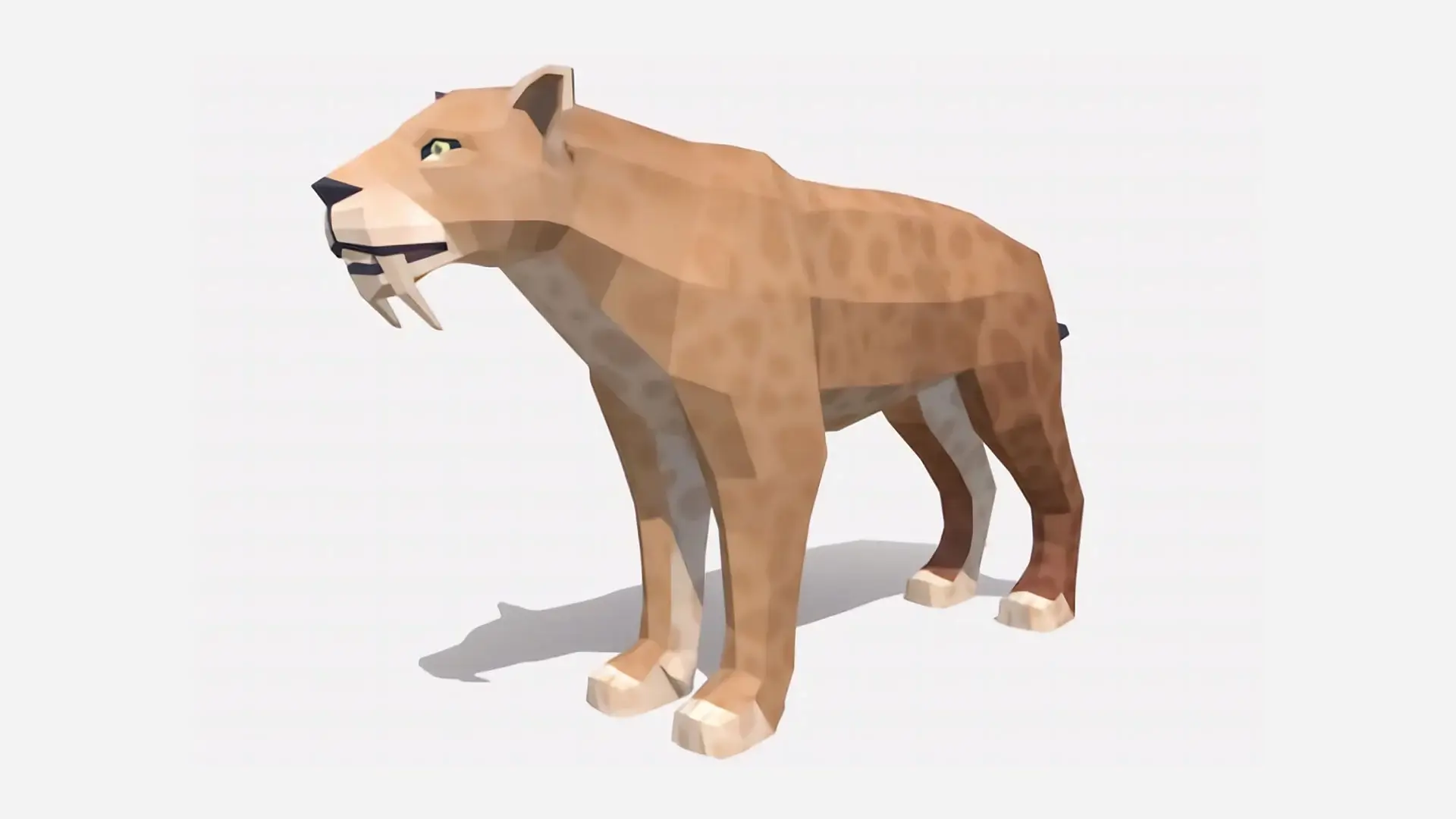Researchers want their models to inspire more accurate reconstructions of extinct animals such as mammoths and saber-toothed cats
Have you ever wanted to eat breakfast sitting across from a dire wolf or watch a saber-toothed cat roar from the comfort of your living room? These ice age animals have been extinct for more than 10,000 years, but scientists are bringing them back to life—virtually.
The team developed three-dimensional, animated models of some of the ice age animals found in the site of Rancho La Brea, better known as the La Brea Tar Pits, in Los Angeles. Researchers at the Natural History Museum of Los Angeles County, the La Brea Tar Pits and Museum, and the University of Southern California worked with a video game development company to build the models and adapt their work for augmented-reality-enhanced (AR-enhanced) museum exhibits, as well as smartphone-based AR experiences on platforms such as Snapchat and Instagram. The study was published on March 2 in Palaeontologia Electronica.
The team hopes that bringing scientifically accurate models to a broad audience will encourage paleoart to become more rigorous. This genre, which includes paintings, sculptures and other artistic reconstructions of prehistoric life, is based on scientific evidence but can be error-prone. “Paleoart is a hypothesis about an extinct animal,” says study co-author Matt Davis, a paleontologist and exhibition developer at the Natural History Museum of Los Angeles County. “The problem is that we don’t treat paleoart with the same rigor that we treat our other scientific research.” Co-author Emily Lindsey, a paleontologist and excavation site director at the La Brea Tar Pits, agrees. She describes paleoart as “this very cool, imaginative space that overlaps with science. But it’s almost never the case that the artists are overtly justifying their scientific choices.”
As an example, Lindsey cites the sculpture of a Columbian mammoth sinking into the Lake Pit outside the La Brea Tar Pits Museum—a portrayal that could perpetuate the misconception that asphalt pools were like quicksand. They were actually only a few centimeters deep, so animals were caught in them like a fly caught on a sticky trap, not one drowning in a jar of honey. “That is the most iconic image of the La Brea Tar Pits, and it’s been propagated thousands of times in popular culture,” Lindsey says.
The team initially set out to study how much augmented reality can enhance museum visitors’ engagement. “People are pitching new technology in museums all the time,” Davis says, “but there’s actually very little research that shows that people learn better in AR.” To put this tech to the test, the scientists decided to implement multiple AR-enhanced exhibits at the Tar Pits Museum. The exhibits would feature some of the hundreds of plants and animals whose fossils have been discovered at the tar pits over the past century or so. After running a small but promising AR pilot study, the researchers looked for more accurate AR assets for a larger study and hit an immediate snag: peer-reviewed, scientifically accurate AR models of ice age flora and fauna did not exist, Lindsey says. So they decided to make their own.
The researchers re-created 13 popular ice age animals—including a dire wolf, saber-toothed cat, American lion and Columbian mammoth—using low-polygon, or “low-poly,” graphics. A low-poly graphic is built from polygons, two-dimensional, typically triangular shapes that are merged together to form a 3-D figure.
